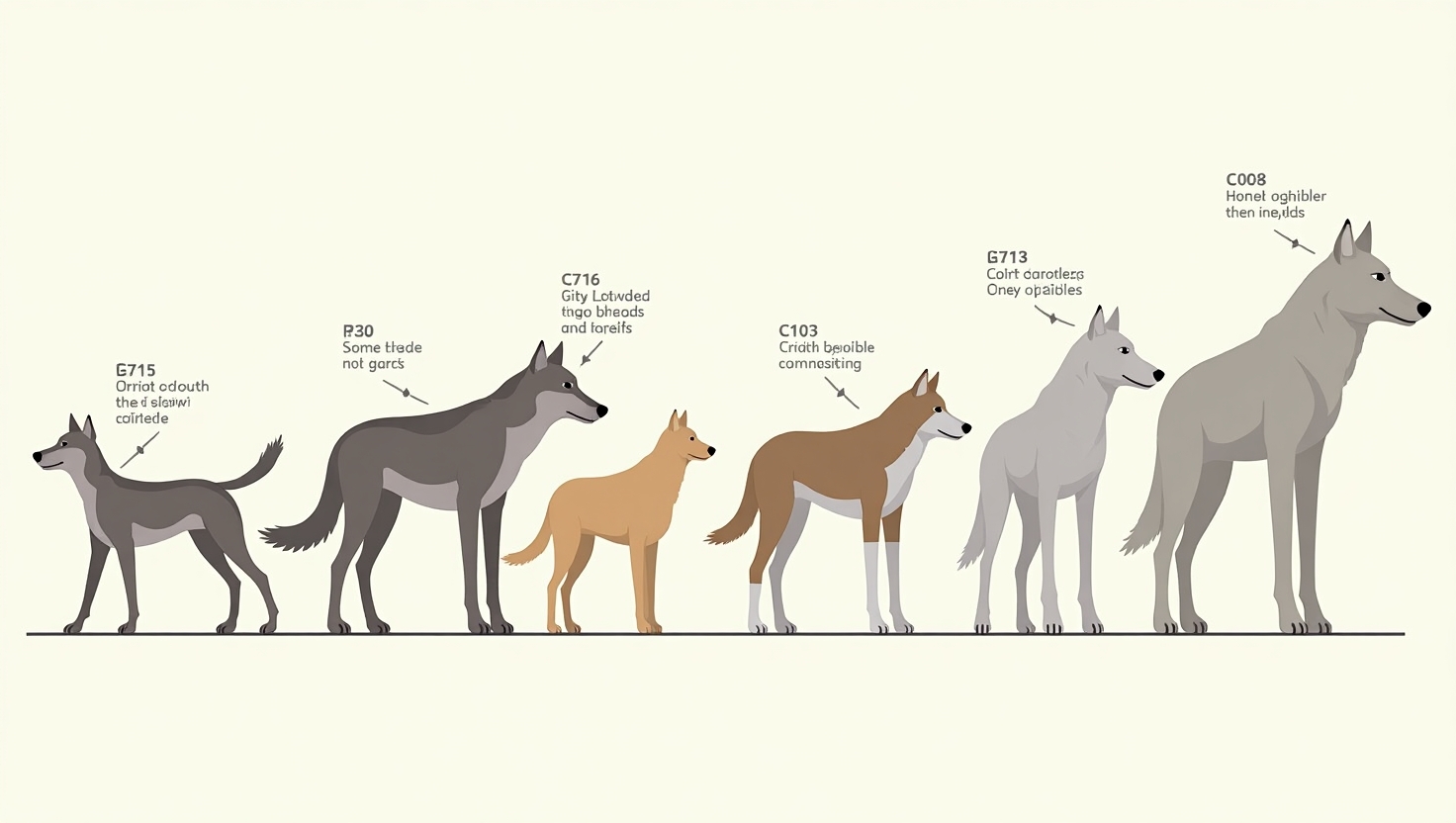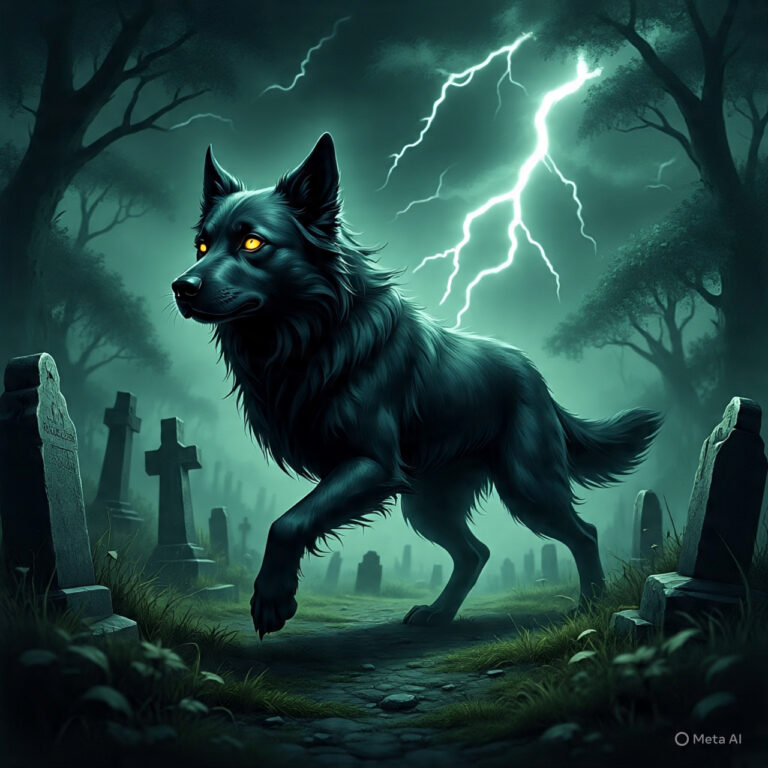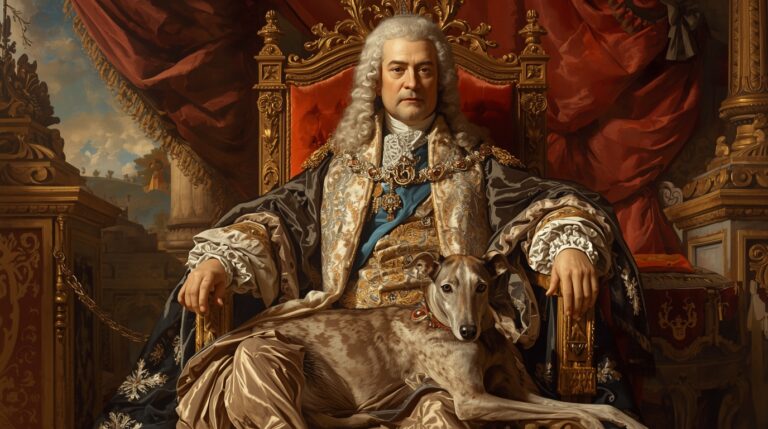Dog Evolution from Wolves: A 15,000-Year Journey from Wild Predator to Human Companion

Introduction: The Genetic Bond Between Wolves and Dogs
The evolution of dogs from wolves is one of the most fascinating examples of domestication in the animal kingdom. Modern domesticated dogs (Canis lupus familiaris) trace their ancestry back to the gray wolf (Canis lupus), sharing more than 99.9% of mitochondrial DNA. Over approximately 15,000 years, wolves transitioned from wild predators to loyal companions, undergoing profound changes in genetics, behavior, and appearance.
Understanding how this evolutionary journey occurred sheds light on not only canine biology but also the development of human civilization, as early humans and dogs co-evolved in mutual cooperation.
Scientific Classification: From Canis lupus to Canis lupus familiaris
Dogs and wolves belong to the same genus (Canis) and are classified under the same species, with dogs considered a subspecies: Canis lupus familiaris. This taxonomic closeness is reinforced by their ability to interbreed and produce fertile offspring, such as wolf-dog hybrids.
Despite their genetic similarity, thousands of years of selective breeding, environmental adaptation, and natural selection have created marked differences between modern dogs and their wolf ancestors.
Timeline of Domestication
When Did Dogs Split from Wolves?
According to genetic sequencing and archaeological evidence, the domestication of dogs began around 15,000 to 40,000 years ago. The broad range reflects the scientific debate on whether domestication happened once or multiple times in separate locations.
Domestication Milestones Over 15,000 Years
- 30,000–15,000 years ago: Initial divergence from wolves during the Upper Paleolithic.
- 12,000 years ago: Appearance of more dog-like skulls in fossil records.
- 9,000–5,000 years ago: Dogs begin to appear in Neolithic settlements.
- 3,000 years ago: Formation of distinct breeds based on human needs.
Geographic Origins of Domestication
Central Asia vs Europe Debate
DNA studies suggest that Central Asia, particularly Mongolia and Siberia, may be the origin of dog domestication. However, other research points to Western Europe, based on early dog fossils found in Germany and Belgium.
Role of Ice Age Migrations
During the Last Glacial Maximum, human and wolf populations were compressed into smaller geographic regions. This proximity facilitated the first human-wolf interactions, setting the stage for domestication.
Archaeological Evidence of Early Dogs
Fossil Discoveries in Siberia and Beringia
- Altai Dog (Russia): 33,000-year-old remains resemble early domesticated dogs.
- Bonn-Oberkassel Dog (Germany): Buried with humans around 14,200 years ago, showing emotional significance.
Skull Morphology Comparisons
Cranial measurements show that early dogs had shorter snouts, smaller teeth, and wider cranial vaults than wolves — signs of domestication syndrome.
Role of Early Human Societies in Dog Domestication
Hunter-Gatherers and Proto-Dogs
Early humans likely tamed scavenging wolves, offering food in exchange for alertness and protection. This mutual benefit formed the basis for proto-dog populations.
The Symbiotic Relationship Theory
This theory suggests dogs evolved alongside humans by natural selection favoring friendlier wolves, a process described as self-domestication.
Genetic Markers of Evolution
Mitochondrial DNA vs Nuclear DNA
Studies on mitochondrial DNA (mtDNA) offer clues to maternal lineage, while nuclear DNA reveals adaptations in digestion, behavior, and appearance.
Key Mutations in Behavior and Digestion
- AMY2B gene: Boosted starch digestion, helping dogs adapt to human diets.
- GTF2I gene: Linked to sociability and reduced fear in dogs.
Selective Breeding and Trait Amplification
Evolution Beyond Natural Selection
While initial domestication was natural, humans began selectively breeding dogs for traits such as herding, guarding, and companionship.
Human Influence on Dog Behavior and Size
This led to the creation of over 400 dog breeds, ranging from the tiny Chihuahua to the massive Great Dane, all derived from one ancestral wolf species.
Behavioral Changes Through Domestication
Aggression and Socialization
Domesticated dogs exhibit reduced aggression, higher sociability, and a greater capacity for obedience compared to wolves.
Barking and Communication Differences
Unlike wolves, dogs bark frequently, a trait believed to have evolved to communicate with humans, not just other canines.
Physical Changes Between Wolves and Dogs
Skull, Jaw, and Teeth Adaptations
- Shorter snouts
- Smaller canines
- Rounded heads
These traits emerged through domestication selection pressures.
Size Variation and Fur Texture
Dogs display a wider variety of fur lengths, colors, and textures than wolves, due to phenotypic plasticity.
Pack Dynamics and Social Hierarchy Shifts
From Wolf Packs to Human Families
Dogs replaced wolf pack hierarchy with human-directed loyalty, viewing humans as part of their social group.
Changes in Leadership Structures
Wolves operate with an alpha-led structure, but dogs rely on human command as a leadership cue.
Ancient Dog Breeds Closest to Wolves
Basenji, Saluki, and the Afghan Hound
These breeds are considered among the most ancient, showing minimal divergence from wolf-like traits.
Traits Retained from Wild Ancestors
- High prey drive
- Independent temperament
- Lean body structures
Role of Dogs in Early Human Settlements
Guarding, Herding, Hunting Assistance
Early dogs were instrumental in helping humans with security, livestock control, and game tracking.
Evidence from Mesolithic Artifacts
Cave paintings and bone tools suggest close cooperation between dogs and humans as early as 10,000 years ago.
Cognitive and Emotional Intelligence Evolution
Understanding Human Emotions
Studies show dogs can read facial expressions, detect stress, and even mirror human emotions, suggesting emotional co-evolution.
Neurological Adaptations
MRI scans reveal dogs process human voices and emotions in brain regions similar to humans.
Modern Genetic Research Tools
Whole-Genome Sequencing
Researchers now use next-gen sequencing to identify genes responsible for behavior, disease, resistance and appearance.
Ancient DNA Reconstruction
By analyzing ancient canine DNA, scientists can reconstruct evolutionary timelines and identify points of genetic divergence.
Cultural Representations of Dogs Through History
Mythology and Dog Gods
From Anubis in Egypt to Fenrir in Norse mythology, dogs and wolves have occupied sacred and symbolic roles.
Dogs in Ancient Art and Literature
Early civilizations included dogs in burials, sculpture, and folk tales, underscoring their societal value.
The Ongoing Debate: One Domestication Event or Many?
Competing Theories from Geneticists
Some researchers argue for a single domestication event, while others suggest dual domestications in East Asia and Europe.
The Dual-Origin Hypothesis
A newer model proposes independent domestication events that later merged genetically, explaining discrepancies in DNA records.
Crossbreeding with Wolves: Modern Wolfdogs
What Traits Return in Hybrids?
Wolfdogs often display:
- Skittish behavior
- Inconsistent obedience
- Physical strength
This shows how deeply domestication changed dogs.
Legal and Ethical Implications
Due to their unpredictable behavior, wolf-dog hybrids are banned in many regions, raising animal welfare concerns.
How Dogs Continue to Evolve Today
Urban Adaptation
Modern dogs are adapting to:
- Crowded cities
- Sedentary lifestyles
- Artificial diets
Behavioral Shifts in Companion Roles
The evolution now focuses on emotional intelligence, hypoallergenic traits, and adaptive learning for therapy and service roles.
Conclusion: The Future of Human-Canine Coevolution
Dogs are still evolving alongside humans, driven by genetics, social trends, and technological tools. As we learn more through genome editing, behavioral science, and AI-assisted training, our partnership with dogs may deepen in unprecedented ways.
The story of the domesticated dog is not just about a wolf becoming tame — it’s about two species forging a mutual destiny through cooperation, adaptation, and shared survival.





